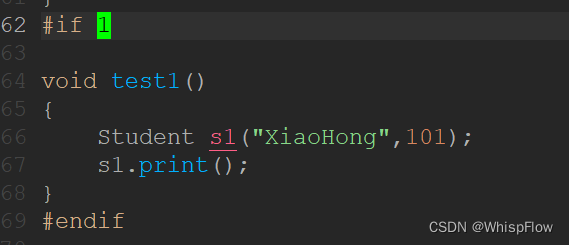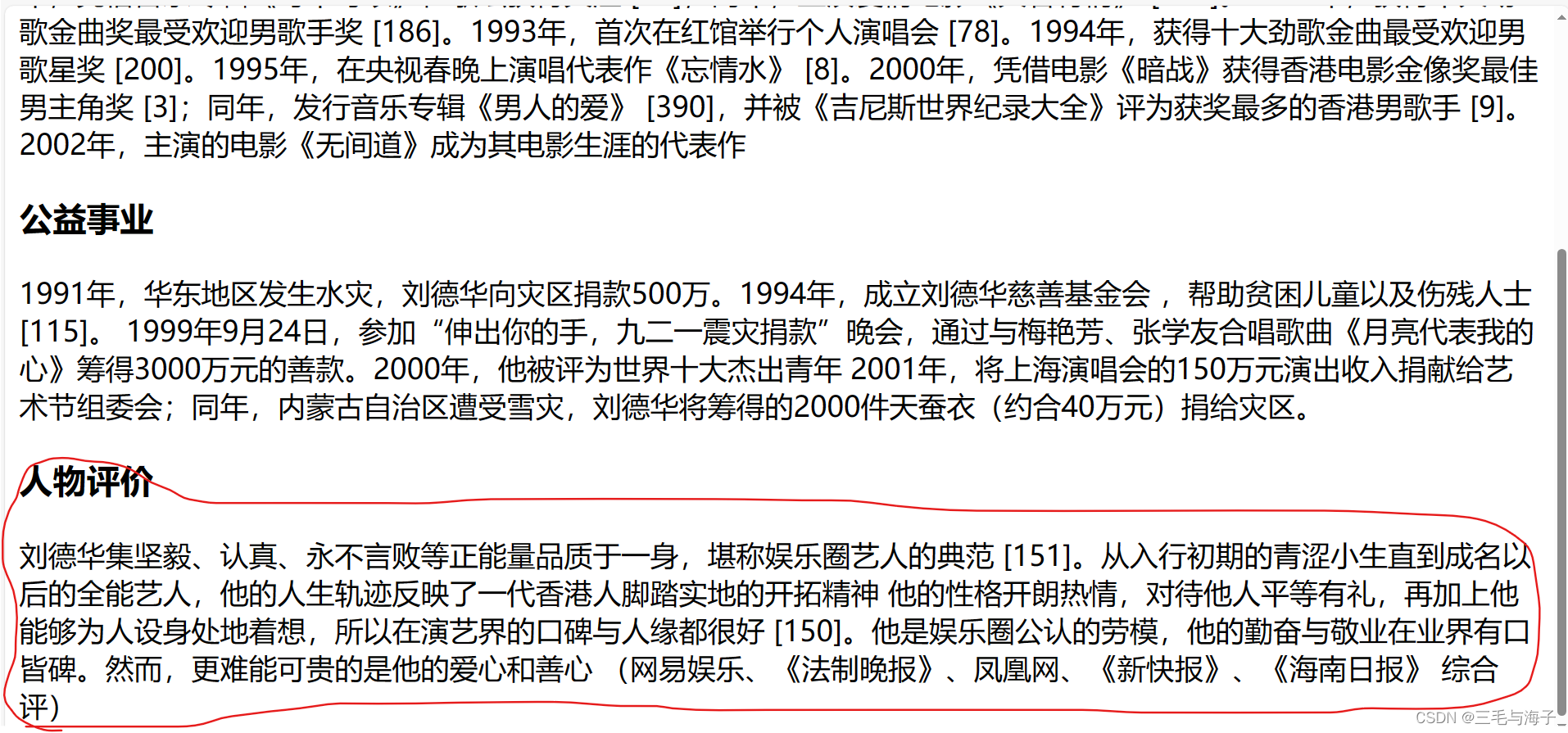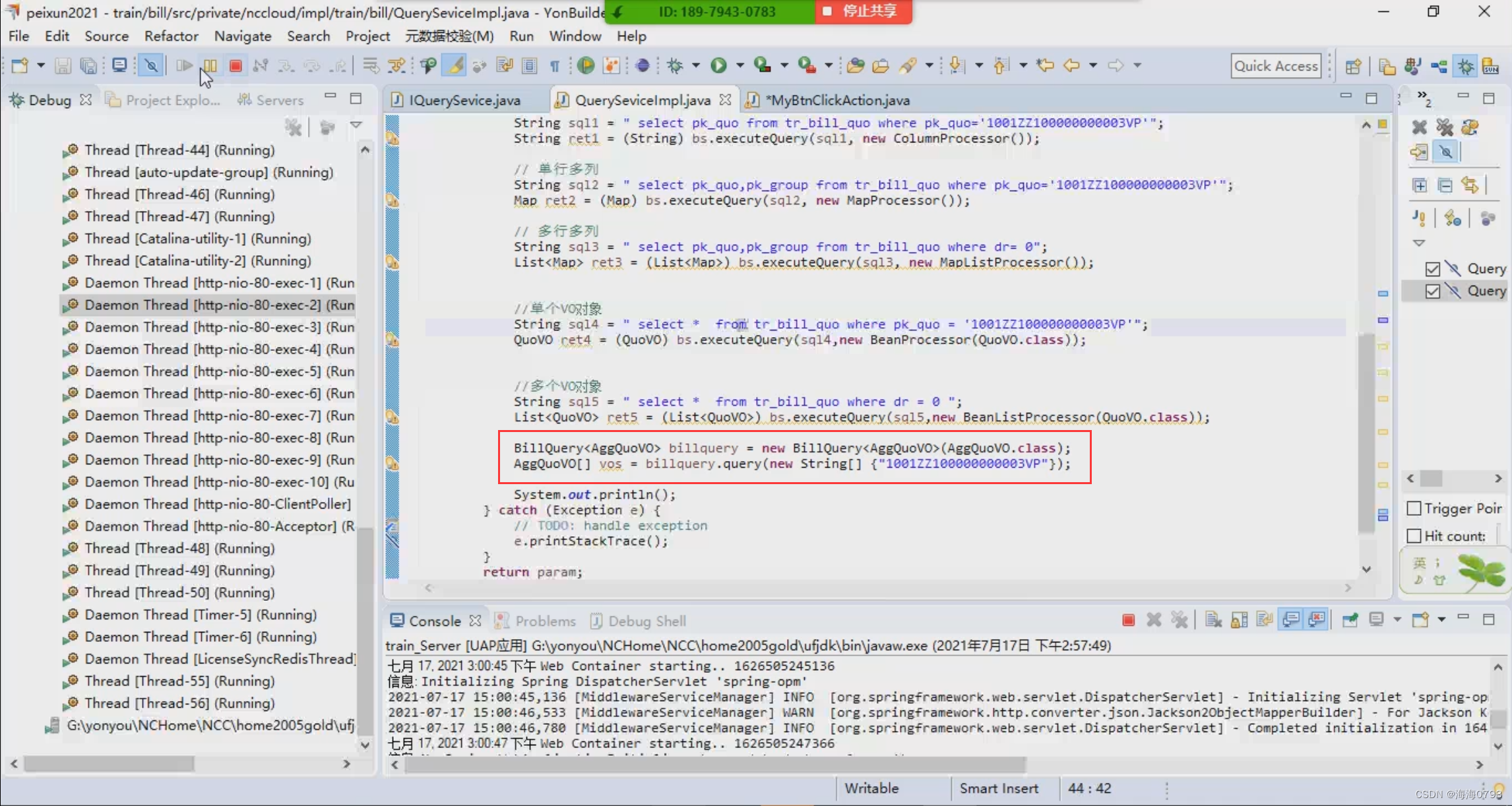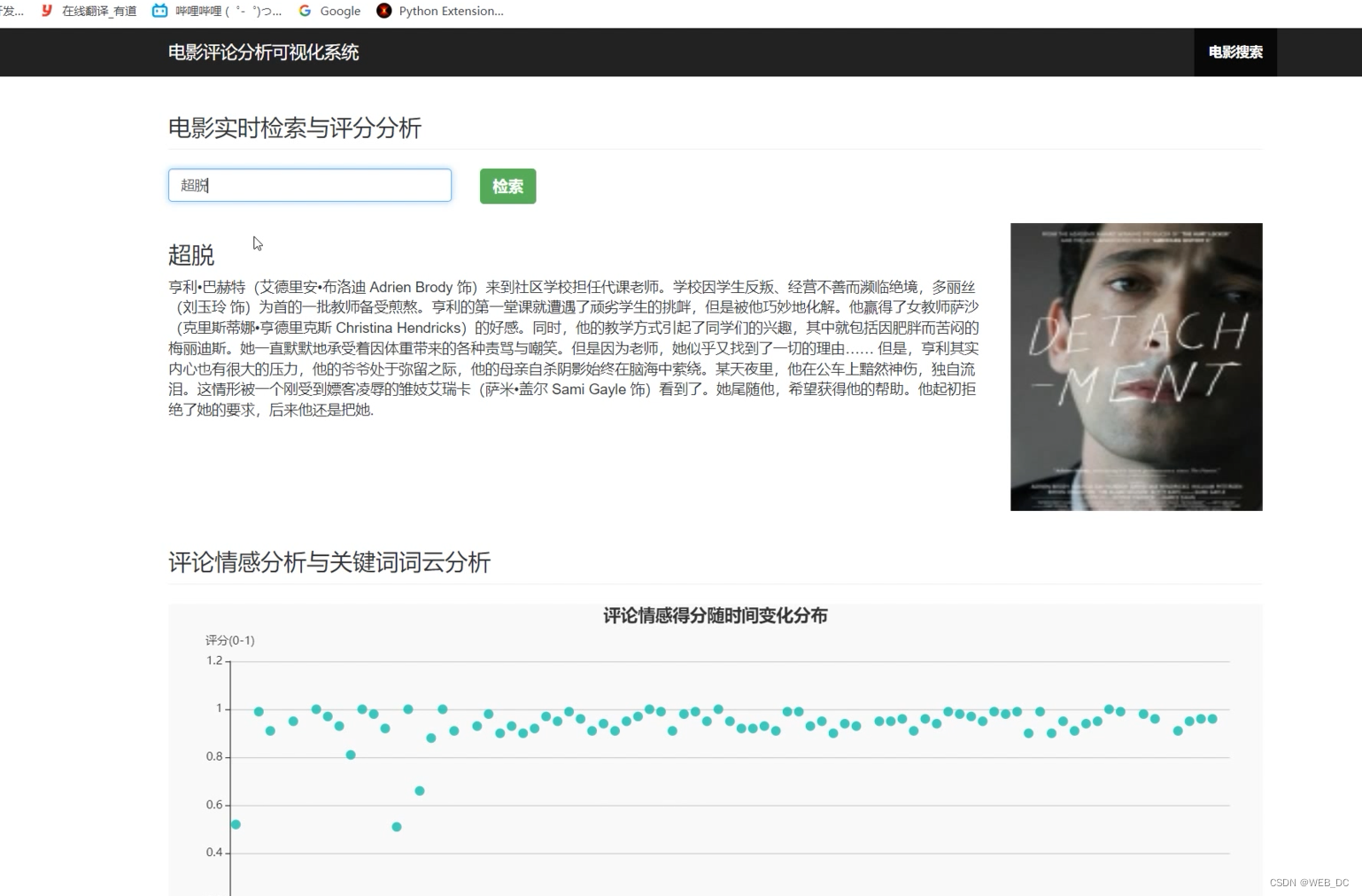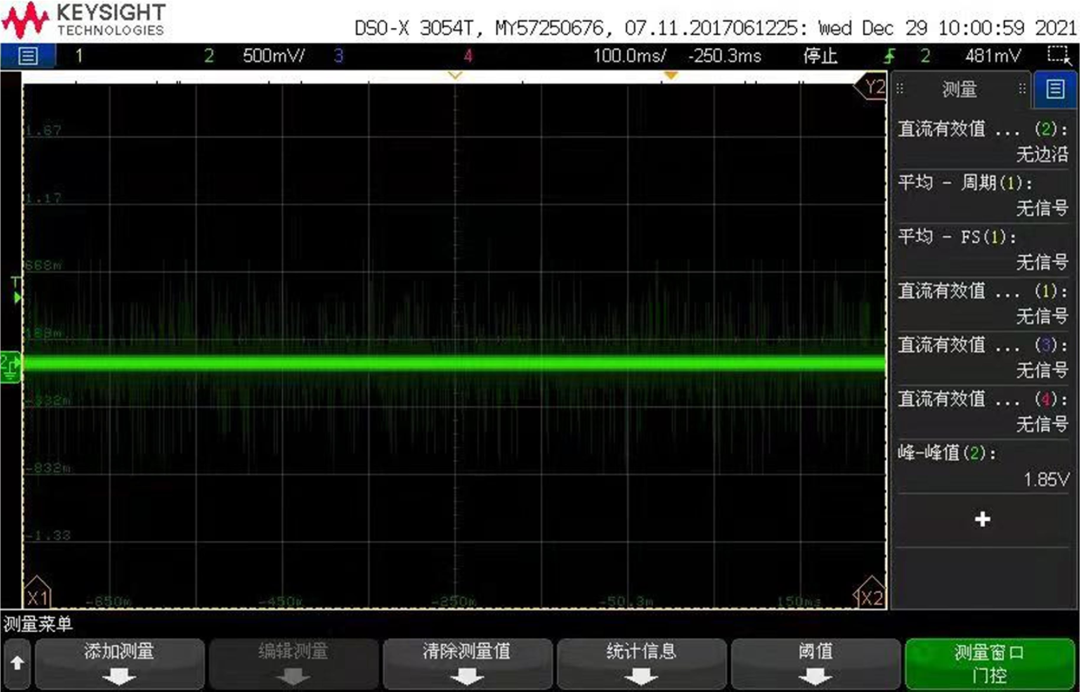这些年,有很多感悟:一个人精力是有限的,一个人视野也有有限的,你总会不经意间发现优秀人的就在身边。
看我文章的小伙伴应该经常听我说过的一句话:技术要学会交流、分享,不建议闭门造车。一个人可以走的很快、一堆人可以走的更远。 这句话是这些年经验的总结。
本文就是由我们粉丝群的小伙伴讨论、分享的总结,最终汇总成了这个《keras 快速使用手册》,如果你也喜欢学习、交流,可以文末的方式加入我们。
我们开始正题:
keras快速使用手册
import keras
import tensorflow as tf
print(keras.__version__)
print(tf.__version__)
基本命令
import random
import tensorflow as tf
import numpy as np
import os
def seed_everything(seed):
random.seed(seed)
os.environ['PYTHONHASHSEED'] = str(seed)
np.random.seed(seed)
tf.random.set_seed(seed)
seed_everything(2019)
定义数据的输入和输出
直接加载到内存中
train_x = np.random.radnom((1000,23))
train_y = np.random.radnom((1000,1))
from sklearn.model_selection import train_test_split
x_train, x_test, y_train, y_test = train_test_split(train_x, train_y, test_size=0.1, random_state=0, shuffle=True)
迭代器的形式读取数据
import keras
# helper function for data visualization
def denormalize(x):
"""Scale image to range 0..1 for correct plot"""
x_max = np.percentile(x, 98)
x_min = np.percentile(x, 2)
x = (x - x_min) / (x_max - x_min)
x = x.clip(0, 1)
return x
# classes for data loading and preprocessing
class Dataset:
"""CamVid Dataset. Read images, apply augmentation and preprocessing transformations.
Args:
images_dir (str): path to images folder
masks_dir (str): path to segmentation masks folder
class_values (list): values of classes to extract from segmentation mask
augmentation (albumentations.Compose): data transfromation pipeline
(e.g. flip, scale, etc.)
preprocessing (albumentations.Compose): data preprocessing
(e.g. noralization, shape manipulation, etc.)
"""
def __init__(self, images_dir, masks_dir, classes=None, augmentation=None, preprocessing=None,):
self.CLASSES = ['sky', 'building', 'pole', 'road', 'pavement',
'tree', 'signsymbol', 'fence', 'car',
'pedestrian', 'bicyclist', 'unlabelled']
self.ids = os.listdir(images_dir)
self.images_fps = [os.path.join(images_dir, image_id) for image_id in self.ids]
self.masks_fps = [os.path.join(masks_dir, image_id) for image_id in self.ids]
# convert str names to class values on masks
self.class_values = [self.CLASSES.index(cls.lower()) for cls in self.CLASSES]
self.augmentation = augmentation
self.preprocessing = preprocessing
def __getitem__(self, i):
# read data
image = cv2.imread(self.images_fps[i])
image = cv2.cvtColor(image, cv2.COLOR_BGR2RGB)
image = cv2.resize(image,(480,480))
mask = cv2.imread(self.masks_fps[i], 0)
mask = cv2.resize(mask,(480,480))
# extract certain classes from mask (e.g. cars)
masks = [(mask == v) for v in self.class_values]
mask = np.stack(masks, axis=-1).astype('float')
# add background if mask is not binary
if mask.shape[-1] != 1:
background = 1 - mask.sum(axis=-1, keepdims=True)
mask = np.concatenate((mask, background), axis=-1)
# apply augmentations
if self.augmentation:
sample = self.augmentation(image=image, mask=mask)
image, mask = sample['image'], sample['mask']
# apply preprocessing
if self.preprocessing:
sample = self.preprocessing(image=image, mask=mask)
image, mask = sample['image'], sample['mask']
return image, mask
def __len__(self):
return len(self.ids)
class Dataloder(keras.utils.Sequence):
"""Load data from dataset and form batches
Args:
dataset: instance of Dataset class for image loading and preprocessing.
batch_size: Integet number of images in batch.
shuffle: Boolean, if `True` shuffle image indexes each epoch.
"""
def __init__(self, dataset, batch_size=1, augment=None, shuffle=False):
self.dataset = dataset
self.batch_size = batch_size
self.shuffle = shuffle
self.indexes = np.arange(len(dataset))
self.augment = augment
self.on_epoch_end()
def __getitem__(self, i):
# collect batch data
start = i * self.batch_size
stop = (i + 1) * self.batch_size
data = []
for j in range(start, stop):
if self.augment is None:
data.append(np.array(X),np.array(y))
else:
im,mask = [],[]
for x,y in zip(X,y):
augmented = self.augment(image=x, mask=y)
im.append(augmented['image'])
mask.append(augmented['mask'])
data.append(np.array(im),np.array(mask))
# transpose list of lists
batch = [np.stack(samples, axis=0) for samples in zip(*data)]
return batch
def __len__(self):
"""Denotes the number of batches per epoch"""
return len(self.indexes) // self.batch_size
def on_epoch_end(self):
"""Callback function to shuffle indexes each epoch"""
if self.shuffle:
self.indexes = np.random.permutation(self.indexes)
# Dataset for validation images
train_dataset = Dataset(x_train_dir, y_train_dir)
valid_dataset = Dataset(x_valid_dir, y_valid_dir)
# check shapes for errors
BATCH_SIZE =4
train_dataloader = Dataloder(train_dataset, batch_size=BATCH_SIZE, shuffle=True)
valid_dataloader = Dataloder(valid_dataset, batch_size=BATCH_SIZE, shuffle=False)
数据增强
from albumentations import (
Compose, HorizontalFlip, CLAHE, HueSaturationValue,
RandomBrightness, RandomContrast, RandomGamma, OneOf,
ToFloat, ShiftScaleRotate, GridDistortion, ElasticTransform, JpegCompression, HueSaturationValue,
RGBShift, RandomBrightness, RandomContrast, Blur, MotionBlur, MedianBlur, GaussNoise, CenterCrop,
IAAAdditiveGaussianNoise, GaussNoise, OpticalDistortion, RandomSizedCrop
)
AUGMENTATIONS_TRAIN = Compose([
HorizontalFlip(p=0.5),
OneOf([
RandomContrast(),
RandomGamma(),
RandomBrightness(),
], p=0.3),
OneOf([
ElasticTransform(alpha=120, sigma=120 * 0.05, alpha_affine=120 * 0.03),
GridDistortion(),
OpticalDistortion(distort_limit=2, shift_limit=0.5),
], p=0.3),
RandomSizedCrop(min_max_height=(sz / 2, sz), height=h, width=w, p=0.5),
ToFloat(max_value=1)
], p=1)
AUGMENTATIONS_TEST = Compose([
ToFloat(max_value=1)
], p=1)
train_dataloader = Dataloder(train_dataset, batch_size=BATCH_SIZE,augment=AUGMENTATIONS_TRAIN,shuffle=True)
valid_dataloader = Dataloder(valid_dataset, batch_size=BATCH_SIZE, augment=AUGMENTATIONS_TEST,shuffle=False)
定义网络模型
from keras.layers import *
from keras.models import *
import warnings
warnings.filterwarnings("ignore")
def my_model(input_shape, with_dropout= True):
m_input = Input(input_shape)
out = Conv2D(32, 3,padding='same', activation="relu")(m_input)
out = BatchNormalization()(out)
out = MaxPool2D(2)(out)
out = Conv2D(64, 3, padding='same', activation="relu")(out)
out = Conv2D(64, 3, padding='same', activation="relu")(out)
out = Conv2D(64, 3, padding='same', activation="relu")(out)
out = BatchNormalization()(out)
out = MaxPool2D(2)(out)
out = Conv2D(64, 3, padding='same', activation="relu")(out)
out = Conv2D(64, 3, padding='same', activation="relu")(out)
out = Conv2D(64, 3, padding='same', activation="relu")(out)
out = BatchNormalization()(out)
out = MaxPool2D(2)(out)
out = Conv2D(128, 3, padding='same', activation="relu")(out)
out = Conv2D(128, 3, padding='same', activation="relu")(out)
out = Conv2D(128, 3, padding='same', activation="relu")(out)
out = BatchNormalization()(out)
out = MaxPool2D(2)(out)
out = Conv2D(128, 3, padding='same', activation="relu")(out)
out = Conv2D(128, 3, padding='same', activation="relu")(out)
out = Conv2D(128, 3, padding='same', activation="relu")(out)
out = Flatten()(out)
out = Dense(64, activation="relu")(out)
if with_dropout:
out = Dropout(0.4)(out)
out = Dense(2, activation="linear")(out)
model = Model(m_input, out)
return model
model = my_model((128,128,1))
model.summary()
获得网络所有的层
- 获得每一层模型的名称,是否可训练,权重信息
print(" model layers:",len(model.layers))
x = np.random.random((1,128,128,1))
out = model.predict(x)
print("output size:",x.shape)
for layer in model.layers:
print(layer.name,layer.trainable)
if len(layer.weights)>0:
print(layer.weights[0].shape)
break
import keras.backend as K
from keras.layers import *
import numpy as np
model=None
model.load_weights("finall_weights.h5")
def get_layers_output(model,x_input,index):
middle_layer = K.function([model.input], [model.layers[index].output])
middle_out=middle_layer([np.expand_dims(x_input,axis=0)])[0]
return middle_out
############################################################################
##获得某一层的权重
layer_dict = dict([(layer.name, layer) for layer in model.layers])
print(layer_dict)
print(model.layers[-1].output)
last_weights=model.layers[-1].get_weights()[0]
last_bais=model.layers[-1].get_weights()[1]
print("last layer weights:",last_weights.shape)
print("last layer bias:",last_bais,last_bais.shape) ##[0.4908378 0.48844907]
############################################################################
##获得某一层的输出
x_train=np.random.random((1,100,100,))
first_layer_out=get_layers_output(model,x_train[0],1)
print(first_layer_out[:,1,1,:3]) ## results:[[0.07100815 0.38357598 0. ]]
############################################################################
############################################################################
##设置模型网络层是否可训练
def make_trainable(net, val):
net.trainable = val
for l in net.layers:
l.trainable = val
# make_trainable(model,False)
############################################################################
获得网络的权重参数
t=model.get_layer('conv2d_14')
print(t)
for index in t.get_weights():
print(index.shape)
冻结网络的某一层
for layer in model.layers:
if not isinstance(layer, BatchNormalization):
layer.trainable = False
保存和加载权重参数信息
model.save_weights("weights.h5") ## v1
model.load_weights("weights.h5",by_name=True)## v2
def IoU(y_true, y_pred, eps=1e-6):
if K.max(y_true) == 0.0:
return IoU(1-y_true, 1-y_pred) ## empty image; calc IoU of zeros
intersection = K.sum(y_true * y_pred, axis=[1,2,3])
union = K.sum(y_true, axis=[1,2,3]) + K.sum(y_pred, axis=[1,2,3]) - intersection
return K.mean( (intersection + eps) / (union + eps), axis=0)
加载模型
from keras.models import load_model
model = load_model('model.h5', custom_objects={'IoU': IoU}) ## v3
model.save("path_to_my_model")
检查权重是否加载成功
model = get_model()
# Train the model.
test_input = np.random.random((128, 32))
test_target = np.random.random((128, 1))
model.fit(test_input, test_target)
# Calling `save('my_model')` creates a SavedModel folder `my_model`.
model.save("my_model")
# It can be used to reconstruct the model identically.
reconstructed_model = keras.models.load_model("my_model")
# # Option 1: Load with the custom_object argument.
# reconstructed_model = keras.models.load_model(
# "my_model", custom_objects={"CustomModel": CustomModel}
# )
# Let's check:
np.testing.assert_allclose(
model.predict(test_input), reconstructed_model.predict(test_input)
)
自定义网络层
import keras.backend as K
from keras.layers import *
from keras.models import *
import numpy as np
def sub_mean(x):
x-=x/2
return x
class MyLayer(Layer):
def __init__(self, output_dim, **kw):
self.output_dim = output_dim
super(MyLayer, self).__init__(**kw)
def build(self, input_shape):
input_dim = input_shape[1]
inital_SCALER = np.ones((input_dim,self.output_dim))
self.SCALER = K.variable(inital_SCALER)
self.trainable_weights = [self.SCALER]
super(MyLayer, self).build(input_shape)
def call(self, x, mask=None):
x = K.dot(x,self.SCALER)
return x
def compute_output_shape(self, input_shape):
return (input_shape[0],self.output_dim)
def get_submean_model():
model = Sequential()
model.add(Dense(5, input_dim=7))
model.add(MyLayer(1))
model.add(Lambda(sub_mean,output_shape=lambda input_shape:input_shape))
model.compile(optimizer='rmsprop', loss='mse')
return model
model = get_submean_model()
model.summary()
import tensorflow as tf
from keras.layers import *
from keras.models import *
class CustomDense(Layer):
def __init__(self, units=32):
super(CustomDense, self).__init__()
self.units = units
def build(self, input_shape):
self.w = self.add_weight(
shape=(input_shape[-1], self.units),
initializer="random_normal",
trainable=True,
)
self.b = self.add_weight(
shape=(self.units,), initializer="random_normal", trainable=True
)
def call(self, inputs):
return tf.matmul(inputs, self.w) + self.b
def get_config(self):
return {"units": self.units}
inputs = Input((4,))
outputs = CustomDense(10)(inputs)
model = Model(inputs, outputs)
model.summary()
config = model.get_config()
new_model = Model.from_config(config, custom_objects={"CustomDense": CustomDense})
new_model.summary()
out = new_model(tf.zeros((2,4)))
out.shape
获得某一层参数
layer = layers.Dense(3)
print(layer.weights) # Empty
x=tf.zeros((2,3))
out=layer(x)
out.shape,layer.weights
model = keras.Sequential()
model.add(layers.Dense(2, activation="relu", input_shape=(4,)))
model.summary()
常用的优化器
from keras.optimizers import RMSprop,Adam,SGD,Adadelta
m_sgd = SGD(lr=0.01,momentum=0.9,decay=1e-3,nesterov=False)
from keras.losses import *
from keras.optimizers import *
model.compile(
optimizer=RMSprop(1e-3),
loss={
"priority": BinaryCrossentropy(from_logits=True),
"department": CategoricalCrossentropy(from_logits=True),
},
metrics=["acc"],
loss_weights={"priority": 1.0, "department": 0.2},
)
常用的损失函数
from keras.losses import mean_squared_error,sparse_categorical_crossentropy,binary_crossentropy
from keras.optimizers import Adam,SGD
def dice_coef_loss(y_true, y_pred):
def dice_coef(y_true, y_pred, smooth=1):
intersection = K.sum(y_true * y_pred, axis=[1, 2, 3])
union = K.sum(y_true, axis=[1, 2, 3]) + K.sum(y_pred, axis=[1, 2, 3])
return K.mean((2. * intersection + smooth) / (union + smooth), axis=0)
return 1 - dice_coef(y_true, y_pred, smooth=1)
# 自定义损失函数
def IoU(y_true, y_pred, eps=1e-6):
if K.max(y_true) == 0.0:
return IoU(1-y_true, 1-y_pred) ## empty image; calc IoU of zeros
intersection = K.sum(y_true * y_pred, axis=[1,2,3])
union = K.sum(y_true, axis=[1,2,3]) + K.sum(y_pred, axis=[1,2,3]) - intersection
return K.mean( (intersection + eps) / (union + eps), axis=0)
model.compile(optimizer=Adam(lr=0.001),loss=dice_coef_loss, metrics=[IoU])
常用的指标验证函数
"""
categorical_accuracy
accuracy
binary_accuracy
mse
mape
top_k_categorical_accuracy
"""
model.compile(loss="mse", optimizer=RMSprop(lr=0.001),metrics=['mape'])
# 自定义验证指标函数
def define_rmse(y_true, y_pred):
return K.sqrt(K.mean(K.square(y_true - y_pred), axis=-1))
model.compile(optimizer='rmsprop',metrics=[define_rmse],loss = define_rmse)
训练过程
# train model
from keras.callbacks import *
callbacks = [
ModelCheckpoint('./best_model.h5', save_weights_only=True, save_best_only=True, mode='min',verbose=1),
ReduceLROnPlateau(monitor='val_loss',factor=0.6,patience=6,mode='min',verbose=1),
EarlyStopping(monitor='val_loss', patience=30, verbose=1),
]
history = model.fit_generator(train_dataloader, steps_per_epoch=len(train_dataloader), epochs=EPOCHS, callbacks=callbacks,
validation_data=valid_dataloader,
validation_steps=len(valid_dataloader),verbose=1)
## train model
history = model.fit(x_train, y_train, batch_size=16 * 4, epochs=120, verbose=1, validation_data=(x_test, y_test),
callbacks=[checkpoint, early_stopping,r_lr],verbose=1)
预测阶段
scores = model.evaluate_generator(val_dataloader)
scores = model.predict_generator(test_dataloader)
scores = model.evaluate(x = val_train, y = val_label,batch_size = None, verbose = 1)
pred = model.predict(np.expand_dims(image, axis=0))
import numpy as np
import tensorflow as tf
from tensorflow import keras
from tensorflow.keras import layers
units = 32
timesteps = 10
input_dim = 5
# Define a Functional model
inputs = keras.Input((None, units))
x = layers.GlobalAveragePooling1D()(inputs)
outputs = layers.Dense(1)(x)
model = keras.Model(inputs, outputs)
class CustomRNN(layers.Layer):
def __init__(self):
super(CustomRNN, self).__init__()
self.units = units
self.projection_1 = layers.Dense(units=units, activation="tanh")
self.projection_2 = layers.Dense(units=units, activation="tanh")
# Our previously-defined Functional model
self.classifier = model
def call(self, inputs):
outputs = []
state = tf.zeros(shape=(inputs.shape[0], self.units))
for t in range(inputs.shape[1]):
x = inputs[:, t, :]
h = self.projection_1(x)
y = h + self.projection_2(state)
state = y
outputs.append(y)
features = tf.stack(outputs, axis=1)
return self.classifier(features)
rnn_model = CustomRNN()
out = rnn_model(tf.zeros((1, timesteps, input_dim)))
print(out.shape)
(1, 1)
keras 模型与pytorch模型
二维卷积层(keras vs pytorch)
import numpy as np
import torch
import torch.nn as nn
import tensorflow as tf
import tensorflow.keras as keras
import tensorflow.keras.layers as layers
#initialize the layers respectively
torch_layer = nn.Conv2d(
in_channels=3,
out_channels=32,
kernel_size=(3, 3),
stride=(1, 1)
)
torch_model = nn.Sequential(
# nn.ZeroPad2d((2,3,2,3)),
torch_layer
)
tf_layer = layers.Conv2D(
filters=32,
kernel_size=(3, 3),
strides=(1, 1),
# padding='same',
# use_bias=False
)
tf_model = keras.Sequential([
# layers.ZeroPadding2D((3, 3)),
tf_layer
])
#setting weights in torch layer and tf layer respectively
torch_weights = np.random.rand(32, 3, 3, 3)
torch_bias = np.random.rand(32)
tf_weights = np.transpose(torch_weights, (2, 3, 1, 0))
tf_bias = torch_bias
## 赋值固定的权重
torch_layer.weight = torch.nn.Parameter(torch.Tensor(torch_weights))
torch_layer.bias = torch.nn.Parameter(torch.Tensor(torch_bias))
tf_model(np.zeros((1,256,256,3)))
# tf_layer.kernel.assign(tf_weights)
tf_layer.weights[0].assign(tf_weights)
tf_layer.weights[1].assign(tf_bias)
tf_inputs = np.random.rand(1, 256, 256, 3)
torch_inputs =torch.Tensor(np.transpose(tf_inputs, (0, 3 ,1,2)))
with torch.no_grad():
torch_output = torch_model(torch_inputs)
tf_output = tf_model(tf_inputs)
print(tf_output.numpy().shape, torch_output.shape)
np.allclose(tf_output.numpy() ,np.transpose(torch_output.numpy(),(0, 2, 3, 1))) #True
(1, 254, 254, 32) torch.Size([1, 32, 254, 254])
True
BatchNormal层(keras vs pytorch)
tf_inputs = np.random.rand(1, 12, 12, 32)
layer =layers.BatchNormalization()
layer(tf_inputs)
weights = layer.get_weights() # gamma,beta,mean,var
for layer in weights:
print(layer.shape)
(32,)
(32,)
(32,)
(32,)
torch_layer = nn.BatchNorm2d(32)
torch_layer.weight,torch_layer.bias
(Parameter containing:
tensor([1., 1., 1., 1., 1., 1., 1., 1., 1., 1., 1., 1., 1., 1., 1., 1., 1., 1.,
1., 1., 1., 1., 1., 1., 1., 1., 1., 1., 1., 1., 1., 1.],
requires_grad=True),
Parameter containing:
tensor([0., 0., 0., 0., 0., 0., 0., 0., 0., 0., 0., 0., 0., 0., 0., 0., 0., 0., 0., 0., 0., 0., 0., 0.,
0., 0., 0., 0., 0., 0., 0., 0.], requires_grad=True))
import numpy as np
import torch
import torch.nn as nn
import tensorflow as tf
import tensorflow.keras as keras
import tensorflow.keras.layers as layers
#initialize the layers respectively
torch_layer = nn.BatchNorm2d(32,eps=1e-05, momentum=0.1) #weight(gamma)和bias(beta)将被使用
torch_model = nn.Sequential(
# nn.ZeroPad2d((2,3,2,3)),
torch_layer
)
tf_layer = layers.BatchNormalization( momentum=0.1,
epsilon=1e-05,)
tf_model = keras.Sequential([
# layers.ZeroPadding2D((3, 3)),
tf_layer
])
#setting weights in torch layer and tf layer respectively
weights = np.random.rand(32)
bias = np.random.rand(32)
## 赋值固定的权重
torch_layer.weight = torch.nn.Parameter(torch.Tensor(weights))
torch_layer.bias = torch.nn.Parameter(torch.Tensor(bias))
tf_model(np.zeros((1,12,12,32)))
# tf_layer.kernel.assign(tf_weights)
tf_layer.weights[0].assign(weights)
tf_layer.weights[1].assign(bias)
tf_inputs = np.random.rand(1, 12, 12, 32)
torch_inputs =torch.Tensor(np.transpose(tf_inputs, (0, 3 ,1,2)))
tf_layer.weights[2].assign(tf_inputs.mean(axis=(0,1,2)))
tf_layer.weights[3].assign(tf_inputs.std(axis=(0,1,2)))
with torch.no_grad():
torch_output = torch_model(torch_inputs)
tf_output = tf_model(tf_inputs)
print(tf_output.numpy().shape, torch_output.shape)
print(np.allclose(tf_output.numpy() ,np.transpose(torch_output.numpy(),(0, 2, 3, 1)))) #True
tf_output[0,0,0,:10],np.transpose(torch_output.numpy(),(0, 2, 3, 1))[0,0,0,:10]
(1, 12, 12, 32) torch.Size([1, 32, 12, 12])
False
(<tf.Tensor: shape=(10,), dtype=float32, numpy=
array([ 0.45506844, -0.12573612, 0.81879985, 0.08219968, 0.08907801,
0.88896 , 0.6723665 , 0.9736586 , -0.1965737 , 0.38121822],
dtype=float32)>,
array([ 0.53097904, -0.34610078, 0.8367056 , -0.046165 , -0.2674462 ,
0.953462 , 0.69444454, 1.0367548 , -0.36438996, 0.60396177],
dtype=float32))
最大池化层(keras vs pytorch)
import numpy as np
import torch
import torch.nn as nn
import tensorflow as tf
import tensorflow.keras as keras
import tensorflow.keras.layers as layers
#prepare inputs and do inference
# torch_inputs = torch.Tensor(np.random.rand(1, 3, 256, 256))
# tf_inputs = np.transpose(torch_inputs.numpy(), (0, 2, 3, 1))
tf_inputs = np.random.rand(1, 256, 256, 3)
torch_inputs =torch.Tensor(np.transpose(tf_inputs, (0, 3 ,1,2)))
torch_layer = nn.MaxPool2d(2)
torch_model = nn.Sequential(torch_layer)
tf_layer = layers.MaxPooling2D(pool_size=(2, 2))
tf_model = keras.Sequential([tf_layer])
with torch.no_grad():
torch_output = torch_model(torch_inputs)
tf_output = tf_model.predict(tf_inputs)
print(tf_output.shape, torch_output.shape)
np.allclose(tf_output ,np.transpose(torch_output.numpy(),(0, 2, 3, 1))) #True
(1, 128, 128, 3) torch.Size([1, 3, 128, 128])
True
全连接层输出(keras vs pytorch)
import numpy as np
import torch
import torch.nn as nn
import tensorflow as tf
import tensorflow.keras as keras
import tensorflow.keras.layers as layers
#initialize the layers respectively
torch_layer = nn.Linear(256,10)
torch_model = nn.Sequential( torch_layer)
tf_layer = layers.Dense(10,activation=None)
tf_model = keras.Sequential([ tf_layer])
#setting weights in torch layer and tf layer respectively
torch_weights = np.random.rand(10,256)
torch_bias = np.random.rand(10)
tf_weights = np.transpose(torch_weights, (1, 0))
tf_bias = torch_bias
## 赋值固定的权重
torch_layer.weight = torch.nn.Parameter(torch.Tensor(torch_weights))
torch_layer.bias = torch.nn.Parameter(torch.Tensor(torch_bias))
tf_model(np.zeros((4,256)))
tf_layer.weights[0].assign(tf_weights)
tf_layer.weights[1].assign(tf_bias)
inputs = torch.Tensor(np.random.rand(4, 256))
with torch.no_grad():
torch_output = torch_model(inputs)
tf_output = tf_model(inputs.numpy())
print(tf_output.numpy().shape, torch_output.shape)
np.allclose(tf_output.numpy() ,torch_output.numpy()) #True
(4, 10) torch.Size([4, 10])
True
Flatten vs view() (keras vs pytorch)
import numpy as np
import torch
import torch.nn as nn
import tensorflow as tf
import tensorflow.keras as keras
import tensorflow.keras.layers as layers
np.set_printoptions(precision=4)
torch.set_printoptions(precision=4)
#initialize the layers respectively
tf_layer = layers.Flatten()
tf_model = keras.Sequential([ tf_layer])
tf_inputs = np.random.rand(2,2,2,3)
torch_inputs =torch.Tensor(tf_inputs) #np.transpose(tf_inputs, (0, 3, 1, 2)))
print(tf_inputs.shape, torch_inputs.shape)
with torch.no_grad():
torch_output = torch.flatten(torch_inputs,start_dim=1)
tf_output = tf_model(tf_inputs)
print(tf_output.numpy().shape, torch_output.shape)
np.allclose(tf_output.numpy() ,torch_output.numpy()) #True
(2, 2, 2, 3) torch.Size([2, 2, 2, 3])
(2, 12) torch.Size([2, 12])
True
技术交流与资料获取
技术要学会交流、分享,不建议闭门造车。一个人可以走的很快、一堆人可以走的更远。
资料干货、数据、技术交流提升,均可加交流群获取,群友已超过2000人,添加时最好的备注方式为:来源+兴趣方向,方便找到志同道合的朋友。
技术交流、代码、数据获取方式如下
方式①、微信搜索公众号:Python学习与数据挖掘,后台回复:交流
方式②、添加微信号:dkl88194,备注:交流
我们打造了《100个超强算法模型》,特点:从0到1轻松学习,原理、代码、案例应有尽有,所有的算法模型都是按照这样的节奏进行表述,所以是一套完完整整的案例库。
很多初学者是有这么一个痛点,就是案例,案例的完整性直接影响同学的兴致。因此,我整理了 100个最常见的算法模型,在你的学习路上助推一把!





